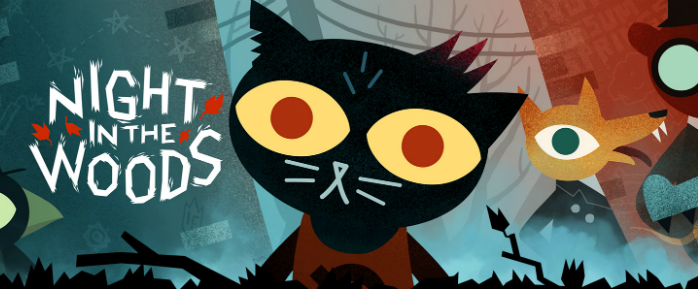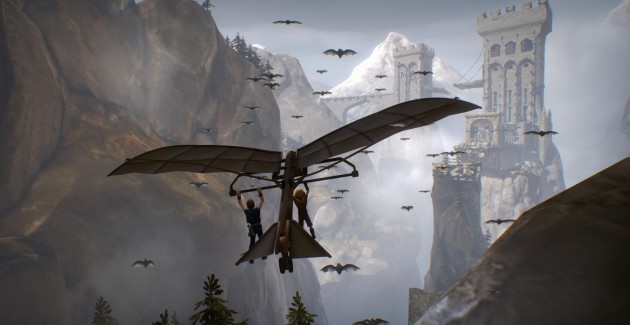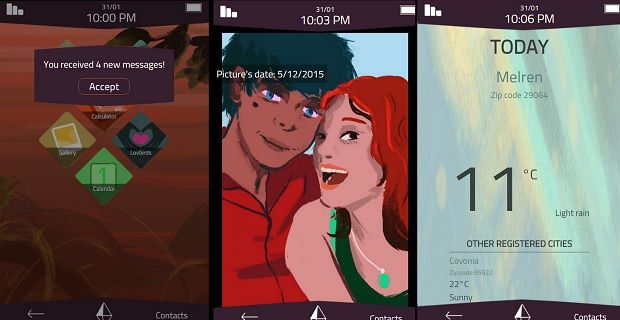It’s no secret that Journey is one of my all time favorite games, having extensively written about its brilliant use of silence and its characterization of landscapes. Though it’s not everyone’s cup of tea, I find the entire experience to be relaxing and fulfilling. Whether it’s the cool blues of the mountainous region or the warm pinks of the desert, the color scheme is sharp but lovely. As I guide the Jawa-esque protagonist down a sand dune, I marvel at the way in which the sand moves like a taupe colored ocean. Sometimes I’ll stop and watch the undulation of waves taking form in the blanket of sand. Between the calming color scheme and the sweeping orchestral music, I’m able to slow down and breathe again.
 I don’t blow off steam with stealth attacks or head shots, nor do I get much satisfaction from level-capping my character. What I crave is a delicious, meaty story that I can sink my teeth into or something more like a spiritual experience. When PS4’s Journey became available, I immediately preordered it and played it as soon as it finished downloading. I’ve been going through a particularly rough bout of panic attacks and social anxiety this summer, so the release of this game couldn’t have occurred at a better or more opportune time.
I don’t blow off steam with stealth attacks or head shots, nor do I get much satisfaction from level-capping my character. What I crave is a delicious, meaty story that I can sink my teeth into or something more like a spiritual experience. When PS4’s Journey became available, I immediately preordered it and played it as soon as it finished downloading. I’ve been going through a particularly rough bout of panic attacks and social anxiety this summer, so the release of this game couldn’t have occurred at a better or more opportune time.
Journey is one of those games that allows the player to pause and sit in the moment. Though some players may prefer a faster-paced game that gets the adrenaline going, Journey’s unique because it encourages and celebrates idleness. When the controller isn’t touched for a period of time, the robed protagonist will sit down in a meditative posture and take in the surrounding landscape. Life is Strange is another game that allows the player to be still and ponder, if they so wish. Some of my favorite moments are when Max sits down and thinks aloud in a secluded area. I don’t always have to be moving towards an end goal because the journey along the way is far more fascinating and enriching. Life is more of a zig zag than a straight line, after all. Idleness isn’t always viewed in the best light because it’s typically associated with laziness. However, for a person who has an anxiety disorder, it’s extremely difficult to get to an idle state. My mind is a busy and often hectic place.
 Personally, I’m unable to sit still for an elongated stretch of time. Between the attention deficit disorder and chronic anxiety, my mind is like an ongoing rave that refuses to end. I frequently stretch myself too thin and I’m always worrying about one thing or another. When going through a particularly nasty bout of anxiety, I want to crawl out of my skin because it’s so uncomfortable dealing with the outside world on a day to day basis. Journey transports me to a better state of mind, which is something I desperately need to do for myself but can’t always get there on my own. For the most part, Journey is a soothing experience, but there are a few tense instances. It’s still a story with conflict and a climax, after all.
Personally, I’m unable to sit still for an elongated stretch of time. Between the attention deficit disorder and chronic anxiety, my mind is like an ongoing rave that refuses to end. I frequently stretch myself too thin and I’m always worrying about one thing or another. When going through a particularly nasty bout of anxiety, I want to crawl out of my skin because it’s so uncomfortable dealing with the outside world on a day to day basis. Journey transports me to a better state of mind, which is something I desperately need to do for myself but can’t always get there on my own. For the most part, Journey is a soothing experience, but there are a few tense instances. It’s still a story with conflict and a climax, after all.
There’s a segment in which robotic creatures patrol a specific area in the mountain level. The landscape, though still pleasing to the eye and beautiful in its own way, is harsh and unforgiving due to a wicked snowstorm. The protagonist has to sprint from one structure to the next to hide from the robotic creatures and to stay out of the way of their destructive lasers, which sit like a third eye in the center of their faces. In rendering the protagonist defenseless, it raises the stakes and places the player in a state of vulnerability.
I’m so accustomed to dealing with stress and the chaos within my mind that I don’t know of any other way to live or operate. I’m a chronically anxious person and I’ve somehow managed to normalize feelings of distress. Generally speaking, video games carry me to another dimension and way of life. It’s why I play them and it’s why I write about their importance. It just so happens that Journey is my go to game for when life becomes too overwhelming and unbearable. It makes me smile and puts me in a healthier headspace. What more could I possibly ask for in a game? It’s therapeutic and I’m thankful for that.
 Lastly, Journey‘s multiplayer is unique in that it removes the stress of dealing with verbal harassment from other players. Rather than talking to other players over a mic, Journey has a multiplayer feature in which the player can only communicate with others by triggering the “sing” or “chirrup” button. Instead of using actual words, the players sing to each other in a kind of universal language. I’m a socially anxious person, so it’s a real struggle for me to talk to strangers. This game makes talking to strangers an easy, almost seamless task.
Lastly, Journey‘s multiplayer is unique in that it removes the stress of dealing with verbal harassment from other players. Rather than talking to other players over a mic, Journey has a multiplayer feature in which the player can only communicate with others by triggering the “sing” or “chirrup” button. Instead of using actual words, the players sing to each other in a kind of universal language. I’m a socially anxious person, so it’s a real struggle for me to talk to strangers. This game makes talking to strangers an easy, almost seamless task.
Journey is a pleasant dream I’ve no interest in waking from. It unlocks a sense of inner calm that I rarely tap into, but definitely should. Whether I’m soaring alongside bird-like creatures made of red fabric or permitting myself to be present in a moment that lasts for as long as I like, I’m deeply thankful for a game like this one. Some may argue that the pace is slow or that it’s too tedious, but for someone like me, it’s just the thing I need.




